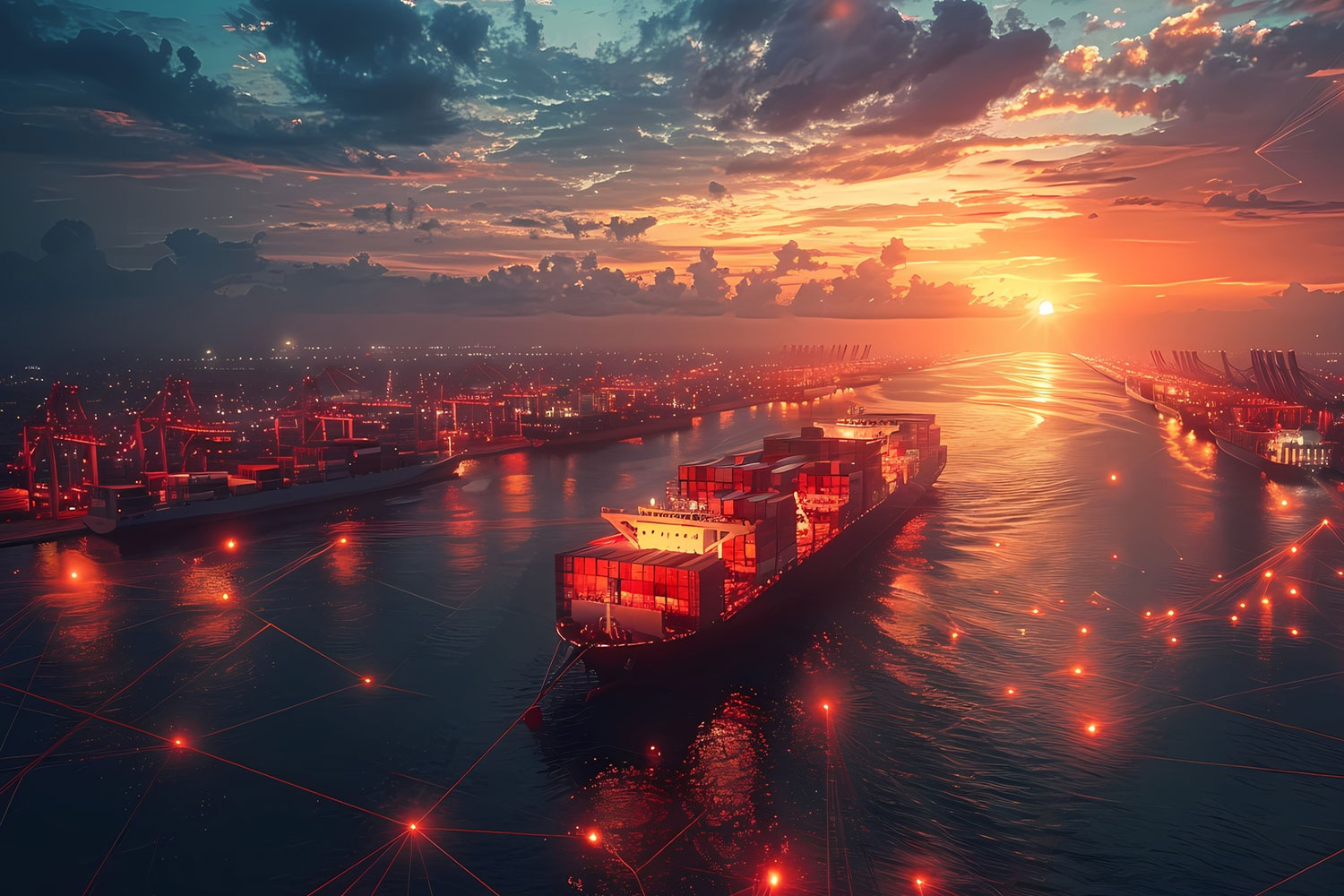1. What’s Happening in the Red Sea?
A sharp escalation in hostilities—attacks launched by Houthi militants against commercial vessels entering the Red Sea and Bab el-Mandeb Strait—triggered a swift industry pivot in late 2023 that has remained unresolved into 2025. The consequence? Up to a 90% drop in container transits, with vessels opting for the round-Africa route around the Cape of Good Hope—adding roughly 10 days and US $1 million per voyage.
Further, major carriers including Hapag-Lloyd warn of continued disruptions into 2025, citing shipping delays and elevated uncertainty from these maritime threats.
Although 2025 saw the launch and continuing presence of Operation Prosperity Guardian—coalition naval deployments to re-open safe commercial routes—the residual risk of maritime attacks has kept shipping costs and insurance premiums markedly elevated.
2. Tariff Volatility: A Double-Edged Sword
While tariffs aren’t directly linked to the Red Sea, they compound the cost challenges businesses now face:
Here’s what importers must prepare for:
- Stronger steel and aluminium duties (June 4): The U.S. ramped up tariffs from 25% to 50% under Section 232, escalating concerns for businesses bracing for even higher costs.
- 90-day tariff pause with China: Temporarily reduced import barriers triggered a sharp surge in trans-Pacific shipments—but at the cost of strained capacity—leaving shippers exposed if spot rates or tariffs re-spike.
-
- Air and ocean freight rate swings: Cargo rates dropped as tariff-heated demand cooled—but the underlying uncertainty remains from overlapping geopolitical and maritime shocks.
Tariff drama isn’t confined to North America either—it’s reshaping global sourcing strategies, inventory cycles, and transport spend all across the supply chain.
3. Supply Chain Disruptions Amplified
When combining Red Sea unrest with tariff instability, the following disruptions have emerged:
- Longer lead times & shipping delays: Rerouting via Africa means container shipments are taking 7–11 extra days—derailing just-in-time operations.
- Escalating freight & risk premiums: Ocean freight rates surged due to congestion and security fees. Tanker charter rates have doubled ($60,000+ daily), while insurance “war-risk” premiums have skyrocketed.
- Capacity crunch: Freight reallocation to new routes tightened container availability elsewhere, such as the Pacific and trans-Atlantic lanes.
- Inventory imbalances: Companies are juggling just-in-time risks with just-in-case buildup—driving cash tied in transit and risking obsolescence.
- Tariff stacking: Tariffs, route changes, and surcharges compound each other, making landed cost calculations extremely unpredictable.
- Longer lead times & shipping delays: Rerouting via Africa means container shipments are taking 7–11 extra days—derailing just-in-time operations.
4. Effective Supply Chain Solutions
Despite the turbulence, forward-thinking firms are deploying key solutions:
- Dynamic route optimization: Automated systems now evaluate Red Sea risk daily, balancing time, cost, and security to select the safest, most efficient routes.
- Control-tower visibility: Real-time monitoring of shipments and tariff positions across regions enables smarter decisions and agile responses to shifting conditions.
- Tariff engineering: Reworking product designs and harmonized codes allows classification under lower-duty categories to avoid punitive sections 301/232.
- Strategic nearshoring & dual-sourcing: To reduce exposure, many North American and European firms are rebalancing sourcing toward Canada/Mexico, or adding backup suppliers outside China.
- Inventory segmentation: Categorizing SKUs by mission-criticality helps determine which to buffer and which to expedite, conserving capital.
- Integrated cost modeling: Advanced TMS/ERP delivers real-time landed cost insights factoring in rerouting, tariffs, security premiums, and currency risk.
5. Why Beyond Logix Is Your Ideal Partner
At Beyond Logix, we specialize in end-to-end supply chain resilience built for exacting challenges like the Red Sea crisis.
✔️ Real-time shipping optimization
Our AI engines factor in geopolitical alerts, weather, freight surcharges, and reroute vessels away from high-risk zones—even mid-voyage—to ensure maximum safety and cost control.
✔️ Holistic tariff management
Our experts track global trade-watch alerts (e.g., Section 232/301 changes, retaliatory duties), enabling proactive strategies—such as reclassification or trade preference utilization (USMCA, CPTPP).
✔️ Nearshoring & dual-sourcing design
We help businesses pivot supply chains toward North America and under-weaponized trade corridors, reducing single-route dependencies and cushioning against disruption.
✔️ Intelligent inventory control
Beyond Logix’s segmentation tools align buffer stock levels with SKU priority and lead time variability, holding just the right amount of inventory to prevent stockouts without overcapitalization.
✔️ Control tower visibility
Through one unified dashboard, clients track everything—from shipment location to tariff exposure—allowing quick, data-driven adjustments across tiers and modes.
✔️ Predictive analytics
Our forecasting engine uses machine learning to predict risk-triggered surcharges and optimal inventory levels under different scenarios, driving both resilience and cost efficiency.
Final Word
The Red Sea disruptions and tariff gyrations in 2025 aren’t isolated events—they symbolize how fragile today’s global supply chains can be. Only organizations that build flexibility, intelligence, and foresight into their operations can maintain competitiveness.
Beyond Logix provides that backbone. We turn risk into opportunity—reducing landed cost, stabilizing service levels, and giving you the agility businesses need today. Partner with us, and sail ahead confidently—no matter how choppy the waters.




